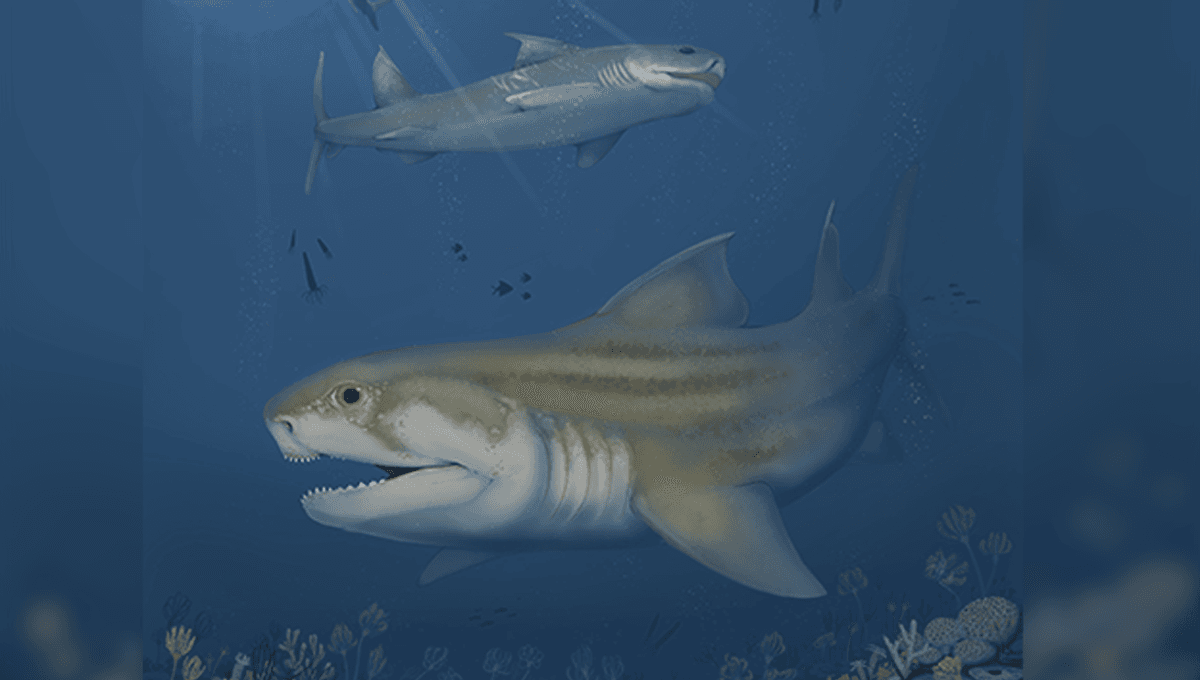
Sprawling underneath Mammoth Cave National Park in the US is, well, a pretty mammoth cave system. In fact, at 686 kilometers (426 miles) in length, it’s the longest cave system in the world – and within it, researchers are making all sorts of discoveries. The latest is two new species of ancient sharks, thought to have lived over 325 million years ago.
Both species were identified from fossils collected in the cave system. It was through adult and juvenile teeth, for example, that palaeontologists classified Troglocladodus trimblei: a shark that’s estimated to have reached around 3-3.6 meters (10-12 feet) in length. That’s about the same as an oceanic whitetip or lemon shark.
T. trimblei also represents both a brand-new species and genus of shark. The genus name translates to “Cave Cladodus” or “Cave Branching Tooth”, whilst the species is named after park superintendent Barclay Trimble, who found the first specimen (a tooth) back in 2019.
The second new shark species discovered was Glikmanius careforum, identified from teeth and a partial set of jaws and gills found in different regions of the cave system. Though its genus was already known to science, there was still novelty to be found, as the cartilage fossil found was the first of its kind for this genus. This particular species revealed that it may actually have originated 50 million years earlier than previously thought.
It’s estimated that G. careforum was about the same length as its fellow new discovery, whilst its jaw shape indicates that it likely had a short head with a powerful bite. That bite would probably have been directed towards smaller sharks, or bony fish, but regardless, you wouldn’t want to be on the receiving end of it.
Both of the new species belong to the ctenacanths, an extinct order of fish characterized by their multi-cusped teeth and spines on their dorsal fins.
It’s thought that they would’ve hunted along the shores that make up modern-day Kentucky and Alabama during the Mississippian subperiod, around 325 million years ago. At the time, that region was part of an ancient seaway connecting what would later become eastern North America, Europe, and northern Africa – though Pangaea decided to get in the way first.
The fossils were uncovered as part of an ongoing collaborative project in US National Parks known as the Paleontological Resources Inventory (PRI), which aims to survey the parks for fossils, assess their significance, and identify how they can be managed and preserved. Since it began, at least 70 species of ancient fish have been identified from samples collected at Mammoth Cave.
“Every new discovery at Mammoth Cave is possible due to collaborations,” said Superintendent Barclay Trimble in a statement. “Our park team is honored to work alongside the National Park Service Paleontology Program and now the University of Alabama Geological Sciences Department whose coordinated efforts have made this latest announcement possible.”
Source Link: Two New Ancient Shark Species Discovered In World's Longest Cave System